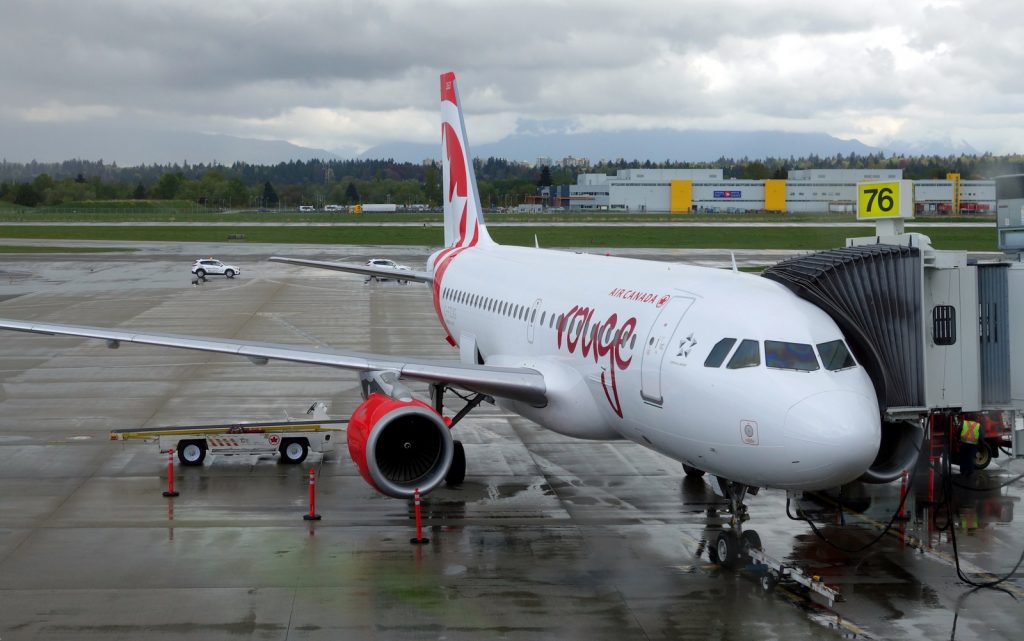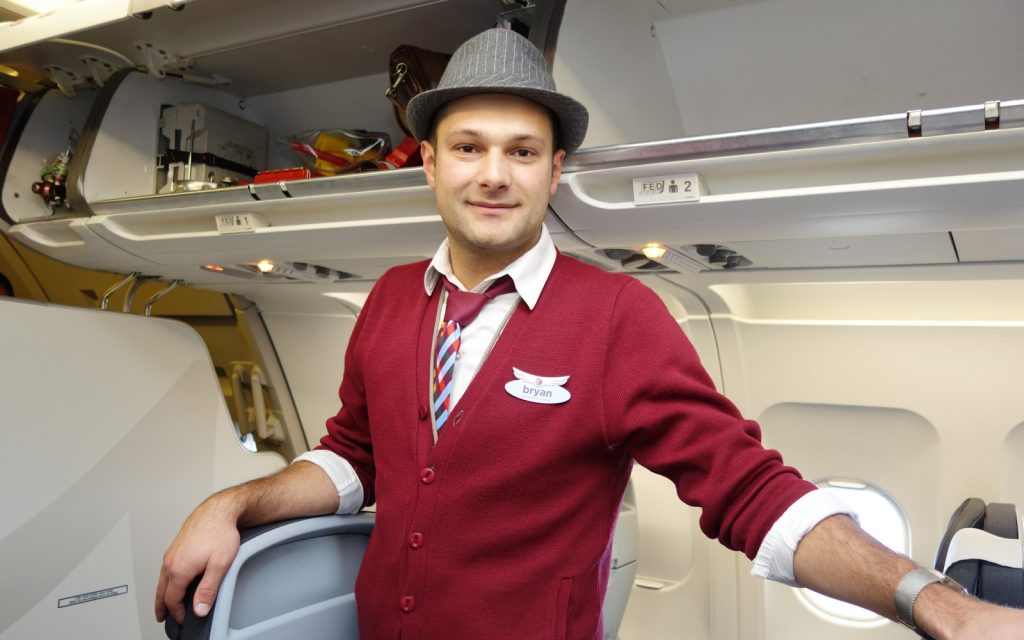Written for AirlineReporter.com
You may have read the recent commentary and analysis by AirlineReporter’s Bernie Leighton, “You Get What You Pay For Rant: Why Economy Class Is What It Is.” I certainly did. It seemed fitting, then, that just a couple of days later, I was invited to Vancouver International Airport (YVR) for Air Canada rouge’s first Western Canada flight.
Air Canada rouge is an “airline within an airline”, and is part of the Air Canada Leisure Group along with inclusive-tour operator, Air Canada Vacations. The airline is positioned as Air Canada’s “Leisure” carrier, intended to get passengers to their vacation destinations. Air Canada rouge launched last July 1st with flights from Toronto (YYZ) and Montreal (YUL) to Europe, the Caribbean, Mexico, and the U.S. In addition to specific vacation travel, Air Canada is hoping to make its unprofitable routes financially viable by a transfer to Air Canada rouge, which has lower operating costs. Bernie talked all about that, and CASMs and RASMs, in his rant.
By the end of 2014, Air Canada will have transferred 47 routes to rouge. Another seven routes new to the AC network will be operated exclusively by rouge. The just-announced Western Canada routes include YVR to Las Vegas, Los Angeles, San Francisco, Phoenix, and seasonal service to Anchorage. From Calgary, flights will go to Las Vegas and Los Angeles.
The Air Canada rouge fleet is made up of Airbus A319s and Boeing 767-300ERs, transferred from Air Canada’s mainline fleet. As of the end of April, there were 15 A319s and four 767s flying for the leisure carrier. Ultimately, rouge may have up to 30 A319s and 20 767s, with the 767s coming into the fleet as Air Canada receives its new 787 Dreamliners.
The transferred planes didn’t just get a new paint job, though. The interiors were reconfigured to a higher density, with low-profile seats. Air Canada’s mainline A319s seat 120 passengers, and the rouge planes have up to 142 seats. The 767s changed from 211 seats on AC to as many as 280 seats in the Air Canada rouge planes. Most of the additional seating in the rouge 767s comes from the elimination of the AC Business Class “pods”. Air Canada’s website shows two different configurations for both rouge aircraft types.
The A319 that I saw at YVR was on Air Canada rouge’s first flight to Las Vegas, and offered “three customer comfort options”. The 2-2 seats in AC Business Class on this A319 were replaced with a 3-3 “Premium rouge” configuration, but the middle seat of each seat block is not sold (similar to intra-European business class). Seat pitch (the distance between the rows) for Premium Rouge is 35″ on the rouge A319, down from 38″ or 39″ in J class on the AC mainline planes. The economy, or “rouge class” seats on both the mainline and rouge planes are about the same width, with the rouge seats a teeny-bit wider at 18″ versus 17.83″. But seat pitch is reduced from 32″ on AC to 29″ on rouge. Seat recline has also been reduced from 4.5″ to 3″. There was also one row of “rouge Plus” on the plane, with a more comfortable 35″ seat pitch.
By comparison, Air Transat, which is one of Air Canada rouge’s competitors in the Canadian vacation market, has seats between 16.5″ and 18″ wide in their A310 & A330 fleet, with a seat pitch of between 31″ and 33″. And in an even higher density than rouge, the remarkably profitable low-cost carrier (LCC) Allegiant Air has managed to put 156 non-reclining seats into its A319s. Allegiant Air has been hugely successful in enticing Vancouver-area passengers to fly from Bellingham International Airport (BLI), just 20 minutes south of the U.S.-Canada border, with the promise of lower fares. You get what you pay for!
Not unexpectedly, fares on Air Canada rouge are lower than what passengers previously paid when the now-transferred routes were operated by mainline Air Canada planes and crews.
Rouge is also trying to differentiate itself from the mainline carrier by its in-flight service. Rouge crews go to the renowned Disney Institute for customer service “excellence” training. If my chats with the flight attendants are any indication, passengers can expect enthusiastic service during their flights. Cabin crews are decked out in a trendy uniform, including trilby hats, Lululemon headbands, and shoes from Vancouver designer John Fluevog. And the crews must adhere to a standard look, right down to makeup and hair styles. Shades of the 1960’s!
Air Canada rouge is one of the first airlines to offer a streaming wireless in-flight entertainment system (IFE) that rouge calls “player”. The system has over 250 movie and TV titles, along with music playlists. So far, player will work with laptops and iThings. Support for Android devices is “coming soon”. Access to player costs $5, and you can rent one of a limited number of iPads for another $10. rouge sends out a pre-travel email to passengers reminding them to download and install the latest Air Canada app on their Apple device, or Adobe Flash for a laptop. There isn’t seatback power on rouge’s A319s, so passengers are advised to make sure their devices have a full charge.
What do you think? Will Air Canada rouge succeed where AC’s previous “airlines within an airline”, Tango and Zip, didn’t? Have you flown AC rouge – how was the passenger experience? Is the recently criticism of AC rouge in the press and social media justified?



